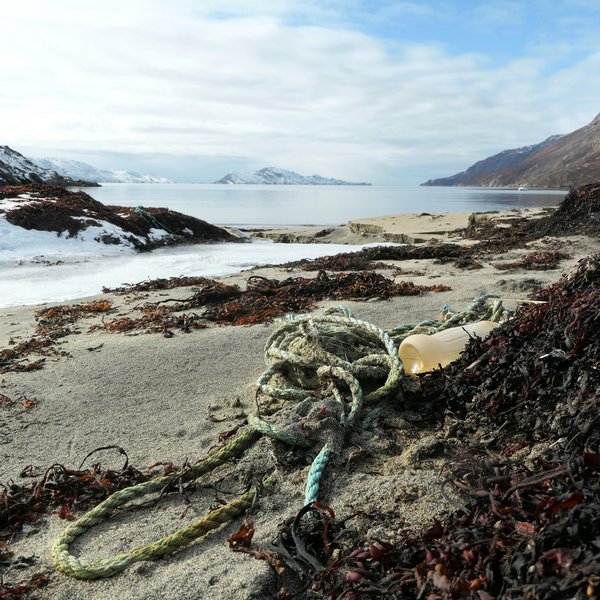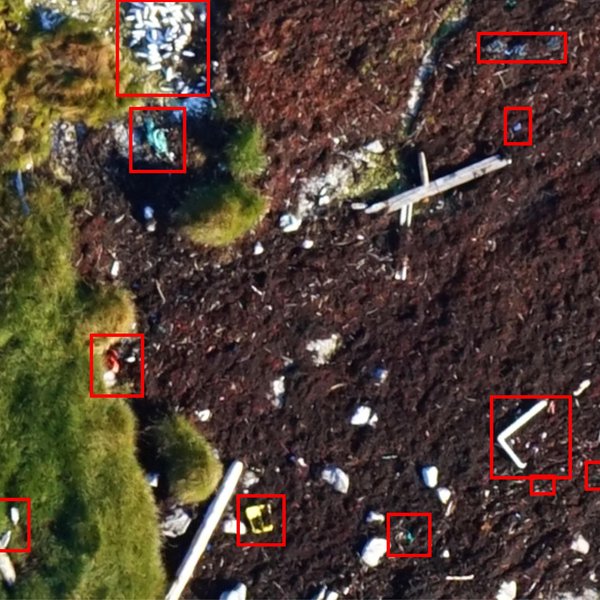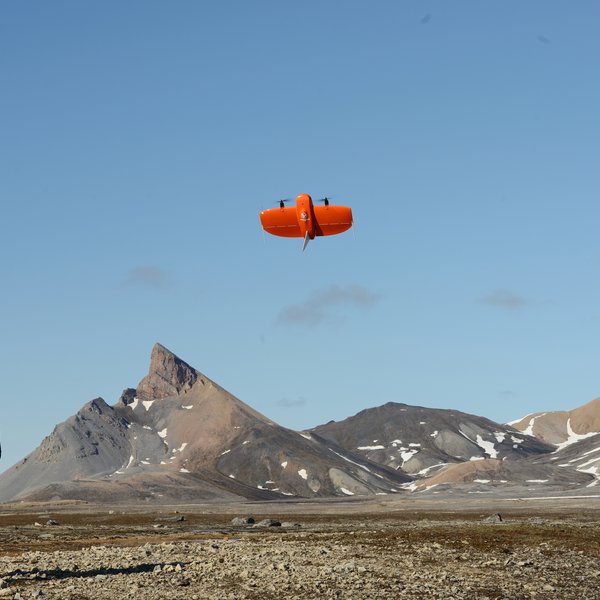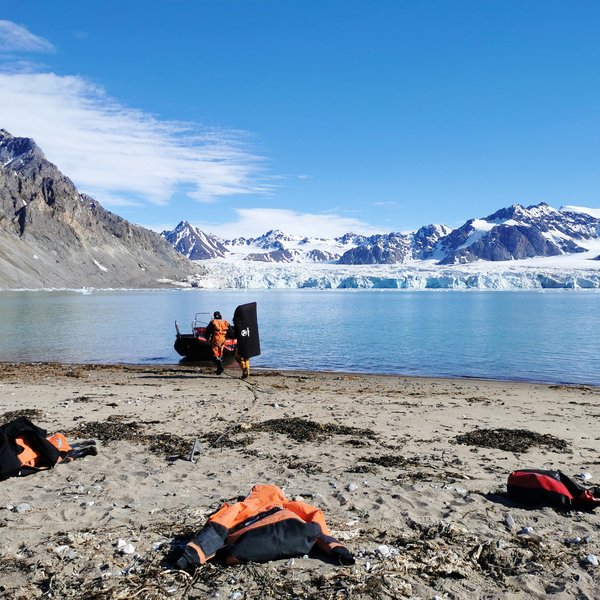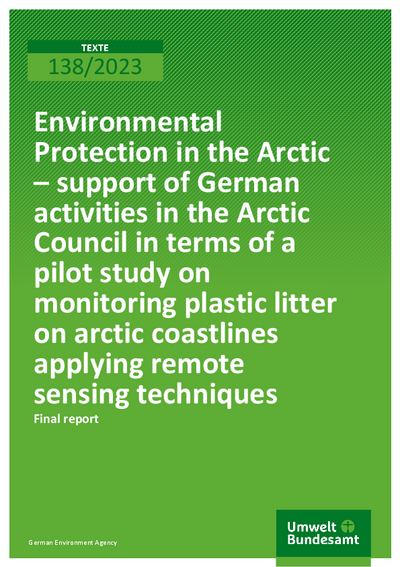Beach litter monitoring in the Arctic using remote sensing and artificial intelligence
This project is developing methods for drone-based beach litter monitoring in the Arctic.
Further information on possible applications for drones can be found in our description of the service.
Remote sensing surveys of beach litter
In international marine protection agreements, beach litter has become an indicator of the overall pollution of marine waters by waste. Monitoring beach litter does not only provide information about the current degree of pollution but also serves as a basis for evaluation of the success of possible plans for action.
This project investigates the suitability of remote sensing techniques, in particular drones, for detecting beach litter.
Project objectives and methods
Main objective is the development of a suitable method to successfully detect and categorise plastic litter in the Arctic using drones.
Pilot study
The project was preceded by the pilot study on monitoring plastic litter on arctic coastlines applying remote sensing techniques.
Aim of this pilot study was to support the traditional methods to monitor beach litter using remote sensing methods such as satellite images or drone detection. Drone flights were carried out in Greenland and Svalbard and the images were then both manually inspected and analysed by means of machine learning. The results were compared to data collected in a ground-based survey.
The pilot study was able to show that drone-based detection of beach litter offers great potential. Nevertheless, more complex beach conditions and the variety in colour, size and shape of plastic objects continue to be challenging, especially when it comes to detecting smaller objects.
The use of satellite images in the Arctic is currently still restricted due to the limited spatial resolution. Even accumulations of plastic waste could not be reliably identified at either pixel or sub-pixel level in the pilot study.
Ongoing project
The follow-up project is based on the results and experiences of the pilot study.
Aim is to further develop the remote sensing methods of the pilot study.
Evaluation of the recorded images using artificial intelligence will be tested additionally.
Aims of the project are:
- Selection and testing of a suitable drone type.
- AI development for the detection and categorisation of beach litter.
- Development of a guideline for drone-based beach litter detection in the Arctic.
Drone surveys
Initially, test flights will be carried out in Germany to identify the most suitable drone platform and sensor technology as well as the required ground resolution.
Testing of these parameters is planned in selected test areas with similar conditions to the Arctic. This is all the more important as the heterogeneity of the beaches in the Arctic makes drone-based detection of plastic waste considerably more difficult.
To simulate the occurrence of plastic in the Arctic, those types of litter that occur most frequently according to OSPAR mapping and fieldwork will be deployed in the test areas.
In a second step, the developed method will be tested and validated in Greenland in two field campaigns (summer 2025 and 2026) by comparing the detection and identification rates of drone detection with the results of terrestrial counts according to OSPAR (2010).
Automated image analysis using artificial intelligence
Since the manual inspection of drone images is very time-consuming, especially for large areas, artificial intelligence methods are being further developed in this project to achieve (partial) automation of the detection and categorisation. To this end, we are co-operating with the German Research Centre for Artificial Intelligence GmbH (DFKI).
Possible concepts for the application of the method in the Arctic
Based on the developed and tested method, a guideline for the use of drones in the Arctic will be established. This is intended to provide both an overview and a recommendation for the drone equipment to be used as well as flight parameters such as transect design, flight altitude, ground resolution and speed, enabling a simple and comprehensible application of the methodology.
In cooperation with Qeqqata Kommunia, potential users of the method will be identified and contacted. Concepts for the long-term and supra-regional collection of beach litter using drones will be developed in direct dialogue.
The possible applications of drones for beach litter collection and the use of AI-based analysis will be presented in a two-day face-to-face workshop with interested stakeholders in Sisimiut (Greenland).
Papers and reports
Environmental Protection in the Arctic – support of German activities in the Arctic Council in terms of a pilot study on monitoring plastic litter on arctic coastlines applying remote sensing techniques - Final report
TEXTE 138/2023. Ressortforschungsplan of the Federal Ministry for the Environment, Nature Conservation and Nuclear Safety. Project No. (FKZ) 3719 18 201 0. Report No. FB001079/ENG
Further information
Pilot study on monitoring plastic litter on arctic coastlines applying remote sensing techniques
The project
Environmental protection in the Arctic – support of German activities in the Arctic Council in terms of a pilot study on monitoring plastic litter on arctic coastlines applying remote sensing techniques
was carried out on behalf of the German Environment Agency (UBA).
On behalf of
Project duration
2019 to 2022
Funding ID
FKZ 3719 18 201 0
Partner
Project on monitoring plastic litter on arctic coastlines applying remote sensing techniques and automated data analyses using artificial intelligence
The project
Monitoring plastic litter on arctic coastlines applying remote sensing techniques and automated data analyses using artificial intelligence
is carried out on behalf of the German Environment Agency (UBA).
On behalf of
Project duration
2024 to 2027
Funding ID
FKZ 3723 18 202 0
Partner

